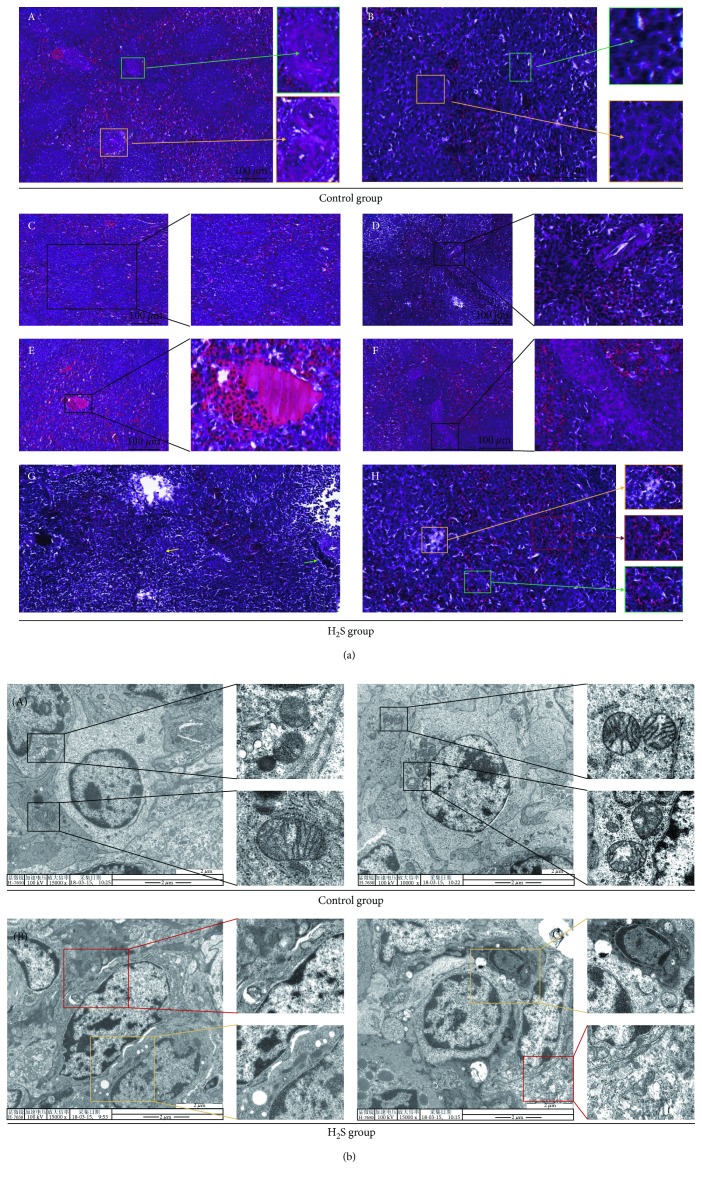Figure 1.
Histopathological and ultrastructural changes in chicken spleens. Histopathological changes and ultrastructural changes in chicken spleen tissues after 6 weeks of H2S exposure. (a) represents histopathological changes of chicken spleen tissues (400x). A: the normal spleen cells including the central artery (yellow box) and trabecula (green box). B: abundant immune cells in the control spleen including lymphocytes (green box) and macrophages (yellow box). C–F: the spleen damage features: white pulp hyperplasia (C), multiplied lymphatic nodules (D), red pulp congestion (E), splenic cord hyperplasia (F). G: reduced lymphocytes (green arrow) and macrophages (yellow arrow). H: spleen cell necrotic features: karyorrhexis (green box), karyolysis (yellow box), and hematocytosis (red box). (b) represents ultrastructural changes of chicken spleen tissues. A: the normal mitochondrial structure (black box). B: spleen cell necrotic features: mitochondria swelling and vacuolation (yellow box), cell membrane breakage, dissolution, and cytosolic content spillover, accompanied with extensive formation of vesicles (red box).

